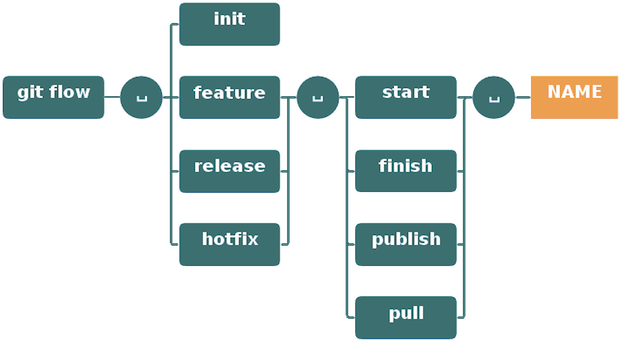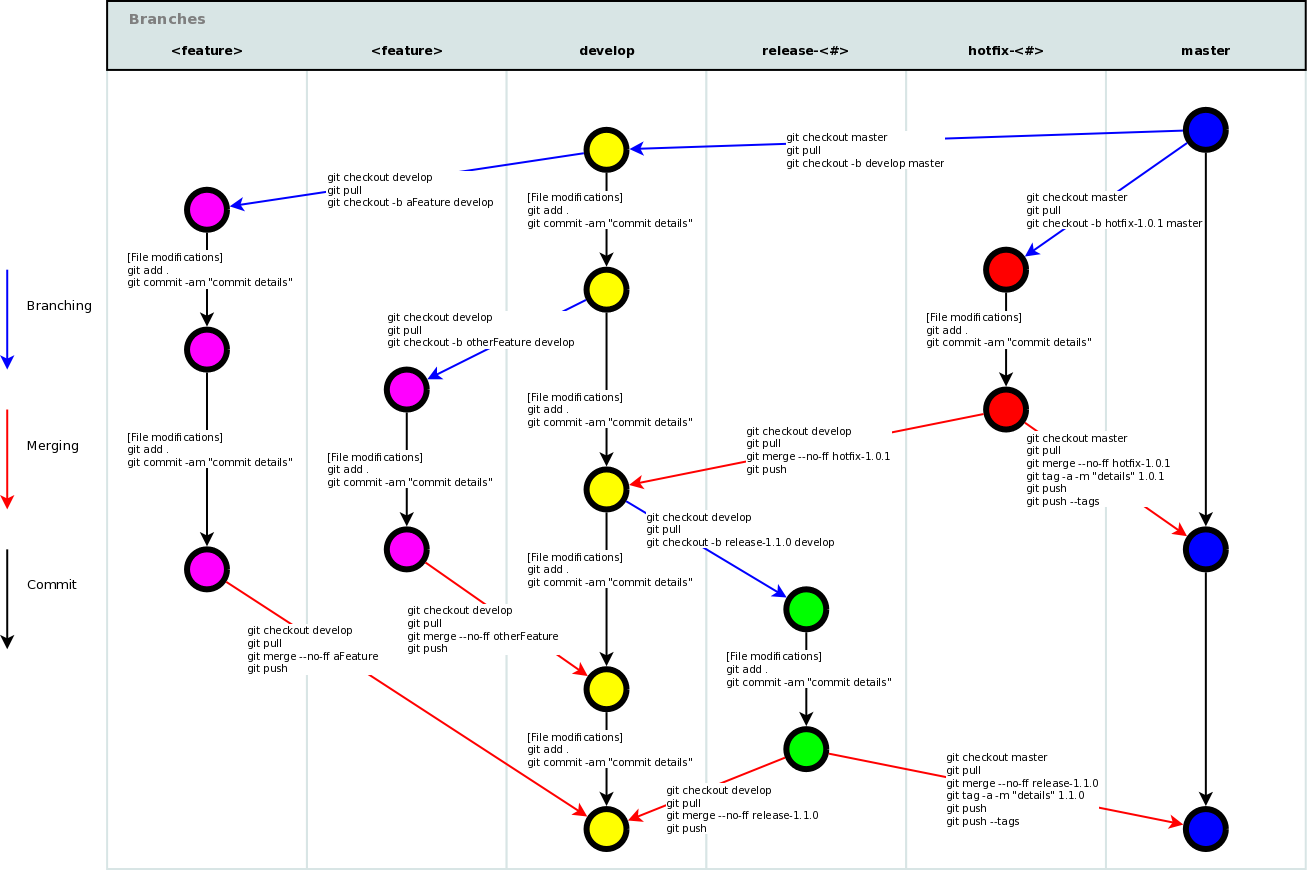# Other Available Languages: 1. [Arabic Git Cheat Sheet](https://github.com/arslanbilal/git-cheat-sheet/blob/master/other-sheets/git-cheat-sheet-ar.md) 2. [Chinese Git Cheat Sheet](https://github.com/arslanbilal/git-cheat-sheet/blob/master/other-sheets/git-cheat-sheet-zh.md) 3. [Hindi Git Cheat Sheet](https://github.com/arslanbilal/git-cheat-sheet/blob/master/other-sheets/git-cheat-sheet-hi.md) 4. [Turkish Git Cheat Sheet](https://github.com/arslanbilal/git-cheat-sheet/blob/master/other-sheets/git-cheat-sheet-tr.md) 5. [Spanish Git Cheat Sheet](https://github.com/arslanbilal/git-cheat-sheet/blob/master/other-sheets/git-cheat-sheet-es.md)
Git cheat sheet saves you from learning all the commands by heart.
Be free to contribute, update the grammar mistakes. You are also free to add your language file.
###Index
- Set Up
- Configuration Files
- Create
- Local Changes
- Search
- Commit History
- Branches & Tags
- Update & Publish
- Merge & Rebase
- Undo
- Git Flow
##Setup
#####Show current configuration:
$ git config --list
#####Show repository configuration:
$ git config --local --list
#####Show global configuration:
$ git config --global --list
#####Show system configuration:
$ git config --system --list
#####Set a name that is identifiable for credit when review version history:
$ git config --global user.name “[firstname lastname]”
#####Set an email address that will be associated with each history marker:
$ git config --global user.email “[valid-email]”
#####Set automatic command line coloring for Git for easy reviewing:
$ git config --global color.ui auto
#####Set global editor for commit
$ git config --global core.editor vi
##Configuration Files
#####Repository specific configuration file [--local]:
<repo>/.git/config
#####User-specific configuration file [--global]:
~/.gitconfig
#####System-wide configuration file [--system]:
/etc/gitconfig
##Create
#####Clone an existing repository:
There are two ways:
Via SSH
$ git clone ssh://user@domain.com/repo.git
Via HTTP
$ git clone http://domain.com/user/repo.git
#####Create a new local repository:
$ git init
##Local Changes
#####Changes in working directory:
$ git status
#####Changes to tracked files:
$ git diff
#####Add all current changes to the next commit:
$ git add .
#####Add some changes in <file> to the next commit:
$ git add -p <file>
#####Commit all local changes in tracked files:
$ git commit -a
#####Commit previously staged changes:
$ git commit
#####Commit with message:
$ git commit -m 'message here'
#####Commit skipping the staging area and adding message:
$ git commit -am 'message here'
#####Commit to some previous date:
git commit --date="`date --date='n day ago'`" -am "Commit Message"
#####Change last commit:
Don't amend published commits!
$ git commit -a --amend
#####Change committer date of last commit:
GIT_COMMITTER_DATE="date" git commit --amend
#####Change Author date of last commit:
git commit --amend --date="date"
#####Move uncommitted changes from current branch to some other branch:
git stash
git checkout branch2
git stash pop
#####Restore stashed changes back to current branch:
git stash apply
#####Remove the last set of stashed changes:
git stash drop
##Search
#####A text search on all files in the directory:
$ git grep "Hello"
#####In any version of a text search:
$ git grep "Hello" v2.5
###Commit History
#####Show all commits, starting with newest (it'll show the hash, author information, date of commit and title of the commit):
$ git log
#####Show all the commits(it'll show just the commit hash and the commit message):
$ git log --oneline
#####Show all commits of a specific user:
$ git log --author="username"
#####Show changes over time for a specific file:
$ git log -p <file>
#####Display commits that are present only in remote/branch in right side
$ git log --oneline <origin/master>..<remote/master> --left-right
#####Who changed, what and when in <file>:
$ git blame <file>
#####Show Reference log:
$ git reflog show
#####Delete Reference log:
$ git reflog delete
##Branches & Tags
#####List all local branches:
$ git branch
#####List all remote branches:
$ git branch -r
#####Switch HEAD branch:
$ git checkout <branch>
#####Create and switch new branch:
$ git checkout -b <branch>
#####Create a new branch based on your current HEAD:
$ git branch <new-branch>
#####Create a new tracking branch based on a remote branch:
$ git branch --track <new-branch> <remote-branch>
#####Delete a local branch:
$ git branch -d <branch>
#####Force delete a local branch: You will lose unmerged changes!
$ git branch -D <branch>
#####Mark the current commit with a tag:
$ git tag <tag-name>
#####Mark the current commit with a tag that includes a message:
$ git tag -a <tag-name>
##Update & Publish
#####List all current configured remotes:
$ git remote -v
#####Show information about a remote:
$ git remote show <remote>
#####Add new remote repository, named <remote>:
$ git remote add <remote> <url>
#####Download all changes from <remote>, but don't integrate into HEAD:
$ git fetch <remote>
#####Download changes and directly merge/integrate into HEAD:
$ git remote pull <remote> <url>
#####Get all changes from HEAD to local repository:
$ git pull origin master
#####Get all changes from HEAD to local repository without a merge:
git pull --rebase <remote> <branch>
#####Publish local changes on a remote:
$ git push remote <remote> <branch>
#####Delete a branch on the remote:
$ git push <remote> :<branch> (since Git v1.5.0)
or
git push <remote> --delete <branch> (since Git v1.7.0)
#####Publish your tags:
$ git push --tags
##Merge & Rebase
#####Merge into your current HEAD:
$ git merge <branch>
#####Rebase your current HEAD onto <branch>:
Don't rebase published commit!
$ git rebase <branch>
#####Abort a rebase:
$ git rebase --abort
#####Continue a rebase after resolving conflicts:
$ git rebase --continue
#####Use your configured merge tool to solve conflicts:
$ git mergetool
#####Use your editor to manually solve conflicts and (after resolving) mark file as resolved:
$ git add <resolved-file>
$ git rm <resolved-file>
#####Squashing commits:
$ git rebase -i <commit-just-before-first>
Now replace this,
pick <commit_id>
pick <commit_id2>
pick <commit_id3>
to this,
pick <commit_id>
squash <commit_id2>
squash <commit_id3>
##Undo
#####Discard all local changes in your working directory:
$ git reset --hard HEAD
#####Get all the files out of the staging area(i.e. undo the last git add):
$ git reset HEAD
#####Discard local changes in a specific file:
$ git checkout HEAD <file>
#####Revert a commit (by producing a new commit with contrary changes):
$ git revert <commit>
#####Reset your HEAD pointer to a previous commit and discard all changes since then:
$ git reset --hard <commit>
#####Reset your HEAD pointer to a remote branch current state.
git reset --hard <remote/branch> e.g., upstream/master, origin/my-feature
#####Reset your HEAD pointer to a previous commit and preserve all changes as unstaged changes:
$ git reset <commit>
#####Reset your HEAD pointer to a previous commit and preserve uncommitted local changes:
$ git reset --keep <commit>
#####Remove files that were accidentally committed before they were added to .gitignore
$ git rm -r --cached .
$ git add .
$ git commit -m "remove xyz file"
##Git-Flow
###Index
###Setup ######You need a working git installation as prerequisite. Git flow works on OSX, Linux and Windows.
#####OSX Homebrew:
$ brew install git-flow
#####OSX Macports:
$ port install git-flow
#####Linux (Debian-based):
$ apt-get install git-flow
#####Windows (Cygwin): ######You need wget and util-linux to install git-flow.
$ wget -q -O - --no-check-certificate https://github.com/nvie/gitflow/raw/develop/contrib/gitflow-installer.sh | bash
###Getting Started ######Git flow needs to be initialized in order to customize your project setup. Start using git-flow by initializing it inside an existing git repository: #####Initialize: ######You'll have to answer a few questions regarding the naming conventions for your branches. It's recommended to use the default values.
git flow init
###Features ######Develop new features for upcoming releases. Typically exist in developers repos only. #####Start a new feature: ######This action creates a new feature branch based on 'develop' and switches to it.
git flow feature start MYFEATURE
#####Finish up a feature: ######Finish the development of a feature. This action performs the following: ######1)Merged MYFEATURE into 'develop'. ######2)Removes the feature branch. ######3)Switches back to 'develop' branch
git flow feature finish MYFEATURE
#####Publish a feature: ######Are you developing a feature in collaboration? Publish a feature to the remote server so it can be used by other users.
git flow feature publish MYFEATURE
#####Getting a published feature: ######Get a feature published by another user.
git flow feature pull origin MYFEATURE
#####Tracking a origin feature: ######You can track a feature on origin by using
git flow feature track MYFEATURE
###Make a Release ######Support preparation of a new production release. Allow for minor bug fixes and preparing meta-data for a release
#####Start a release: ######To start a release, use the git flow release command. It creates a release branch created from the 'develop' branch. You can optionally supply a [BASE] commit sha-1 hash to start the release from. The commit must be on the 'develop' branch.
git flow release start RELEASE [BASE]
######It's wise to publish the release branch after creating it to allow release commits by other developers. Do it similar to feature publishing with the command:
git flow release publish RELEASE
######(You can track a remote release with the: git flow release track RELEASE command)
#####Finish up a release: ######Finishing a release is one of the big steps in git branching. It performs several actions: ######1)Merges the release branch back into 'master' ######2)Tags the release with its name ######3)Back-merges the release into 'develop' ######4)Removes the release branch
git flow release finish RELEASE
######Don't forget to push your tags with git push --tags
###Hotfixes ######Hotfixes arise from the necessity to act immediately upon an undesired state of a live production version. May be branched off from the corresponding tag on the master branch that marks the production version.
#####Git flow hotfix start: ######Like the other git flow commands, a hotfix is started with
$ git flow hotfix start VERSION [BASENAME]
######The version argument hereby marks the new hotfix release name. Optionally you can specify a basename to start from.
#####Finish a hotfix: ######By finishing a hotfix it gets merged back into develop and master. Additionally the master merge is tagged with the hotfix version
git flow hotfix finish VERSION
###Commands
###Git flow schema



